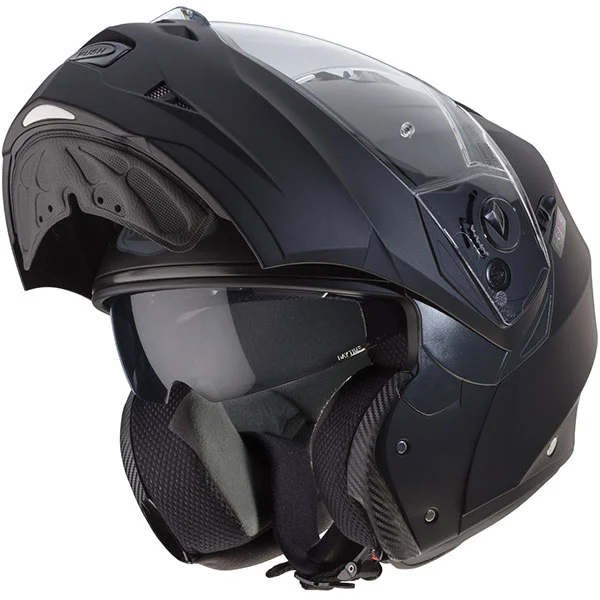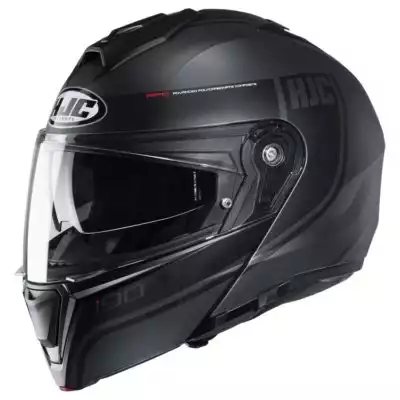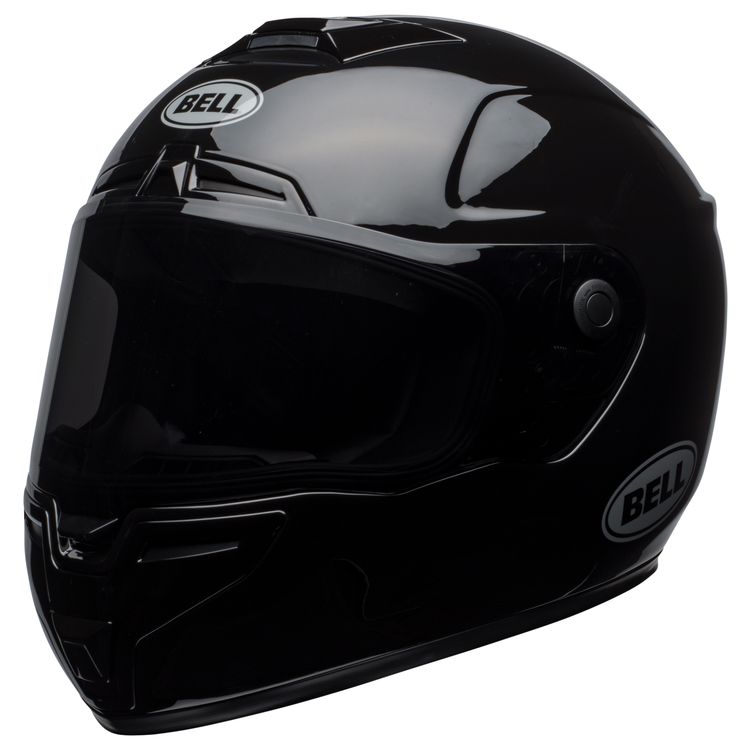Modular and full-face helmets have come to be some of the most widespread and diverse helmet models on the market. Manufacturers continue to make them more advanced, comfortable, and stylish.
But which is the right choice for you?
Over the years, I’ve tried my share of both full-face and modular helmets and have found that both have their pros and cons.
Here’s what I’ve learned and how you can use it to choose the right helmet for you.
What’s the Difference Between a Modular and a Full-Face Helmet?

From a distance, modular and full-face helmets look very much the same. They both have full chin bars that wrap around the front of the face, thereby protecting the entire head. Then they have visors or face shields built into them.
However, modular helmets have one important feature that standard full-face helmets don’t: a detachable chin bar.

The chin bar, along with the face shield, can be detached from the main frame of the helmet and lifted up or sometimes removed altogether.
This leaves the helmet looking and functioning essentially like an open-face or “three-quarter-face” helmet. So to keep it simple: a modular helmet is a helmet that can serve as both a full-face and open-face helmet.
Because modular helmets are basically just more advanced full-face helmets, they share many of the same features.
For example, they usually have ventilation that includes intake vents on the front and exhaust vents on the back. Plus, they have similar chin straps, internal linings, and face shields.
Modular Helmet Pros
Comfort
Modular helmets are great for hot weather since they can be flipped up to work more like an open-face helmet.
If you live in a climate like Florida or Texas, it gets hot under there real fast. Being able to feel the wind on your face for a moment can make a big difference, even if it’s just while you’re waiting at a stoplight.
Communication
Without a communication system, it’s pretty hard to talk to another rider while you’re wearing a full-face helmet. It totally muffles your voice.
However, with a modular helmet, you can flip up the face shield if you need to say something to your friend at a stop. This way, you don’t have to go through the hassle of taking off the helmet. Your ears will thank you.
For this reason, modular helmets are popular with those who ride in big groups. They’re also great for delivery people or riding instructors who regularly need to talk to people.
Eating or drinking
Eating or drinking with a full-face helmet requires you to take off the helmet completely. However, you can just flip up the front with a modular helmet to have a snack at a rest stop. This makes them great for tourers.
Face-shield replacement
Oftentimes it’s easier to change out the face shield or visor on a modular helmet. This allows you to put in tinted shields, anti-fog Pinlock inserts, etc.
Glasses
It’s a lot easier to put on glasses with a modular helmet because you can first put on the helmet with the face shield flipped up, put on the glasses, then lower the face shield. Sliding a full-face helmet down over your glasses is a lot more difficult.
Read our guide to the best motorcycle helmet for glasses wearers
Modular Helmet Cons
Safety
It’s not that modular helmets are unsafe, but since the chin guards are detachable, they’re often not as strong as those of a full-face helmet, which are all one piece.
While most modular helmets are DOT certified, fewer are SNELL certified, which has a higher standard, especially for the chin guard.
Noise
Because modular helmets have more moving parts, they can rattle more at high speeds. More openings allow for wind entrance and, therefore, wind noise. Read more about making your helmet quieter.
Maintenance
Naturally, modular helmets have more moving parts, the mechanisms that let you attach and detach the chin guard and face shield. These little locks and buttons can potentially break down, wear down, and require maintenance or replacement.
Price
Modular helmets are more complex technologically, so they usually cost more. While the highest-end full-face helmets might still be more expensive, all else being equal, a modular helmet will be pricier. Read about how much a helmet should cost.
 HJC i90 Davan Helmet
HJC i90 Davan Helmet
This is an example of your standard mid-range modular helmet.
It has easy detachment and rotation for the chin guard and face shield that just requires a single tough. Advanced ventilation and moisture wicking fabric complement the modular design.
In other words, like most modular helmets, it's highly comfortable and convenient.
Read our guide to the best modular helmets
Full-Face Helmet Pros
Protection
Full-face helmets are the most protective and safest type of helmet. They fully wrap around the head and protect every part of it, including your chin, often the part of your face that strikes the ground in an accident.
Many full-face helmets have SNELL safety ratings that reflect maximum protection. Read more about the safest motorcycle helmets.
Regulations
While modular helmets are usually fine for riding on public streets, racing organizations and private tracks often require full-face helmets. This is why full-face helmets are generally more popular with racers and adventurers.
Weight
Since full-face helmets don’t have the extra parts that provide the modular design, they’re usually lighter. If you’re looking to shave every ounce you can off your gear; a full-face helmet is probably the way to go.
Price
Full-face helmets come in a wide range of prices. Basic ones can be very inexpensive and great for riders on a budget who still want maximum protection.
Read our guide to the best full face motorcycle helmet
Full-Face Helmet Cons
Temperature
It can get really hot and humid inside a full-face helmet, and you don’t have the option of flipping up the face shield to get some relief.
Almost all modern full-face helmets have elaborate ventilation systems that help cool things, but it’s still just not the same as feeling the wind on your open face. Check out our ventilated motorcycle helmet picks.
Hard to take on and off
Full-face helmets must be slid on and off the entire head to do basically anything, from eating to talking to your buddies. This means the inevitable ear scrapes and just the all-around hassle of pulling off the helmet.
 Bell SRT Helmet
Bell SRT Helmet
A great example of a basic full-face helmet, the Bell SRT is tough and protective. Made with lightweight fiberglass, it's so safe that it earned Snell's M2015 rating.
Plus, as you'll notice, it has a better price point than the basic modular model.
Which Is Right for You?
Both full-face and modular helmets are great ways to protect your noggin while riding around at high speeds.
Modular helmets tend to work great for tourers and cruisers, especially those in groups, who will need an easy way to have a bite, talk to fellow riders, or just cool down at stops.
Full-face helmets are better for racers, adventurers, and riders on a budget.
That said, don’t forget to take your personal tastes into account. Now that you know all the pros and cons, you can better choose which fits your situation.